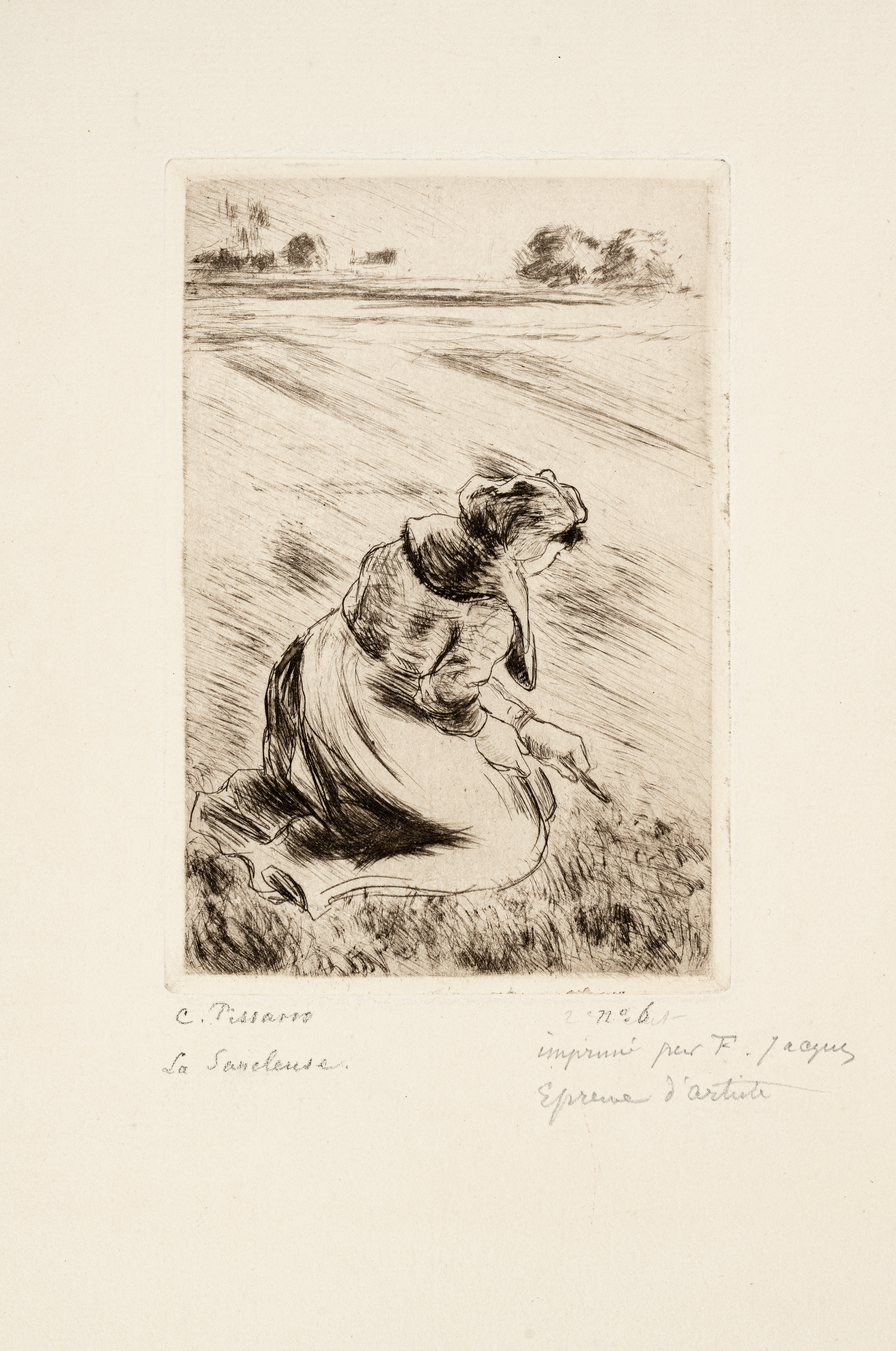
Camille
Pissarro
Pissarro
 |
La Sarcleuse
etching with drypoint, 1887 (?), on medium-weight cream laid paper, with the Van Gelder watermark, a superb impression of the 2nd state (of 2), with rich burr, signed, titled, numbered "n° 6" (over the partly erased mention of "2e état") and annotated "imprimé par F. Jacques (sic*)/ Epreuve d'artiste" in pencil by the artist, with full margins, from the rare edition of only 12 impressions of this state made during the artist's lifetime, in exceptionally fresh condition
P. 163x110 mm., S. 361x250 mm.
